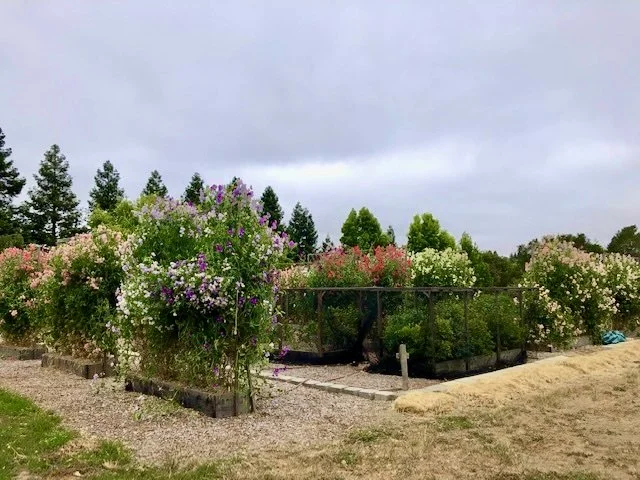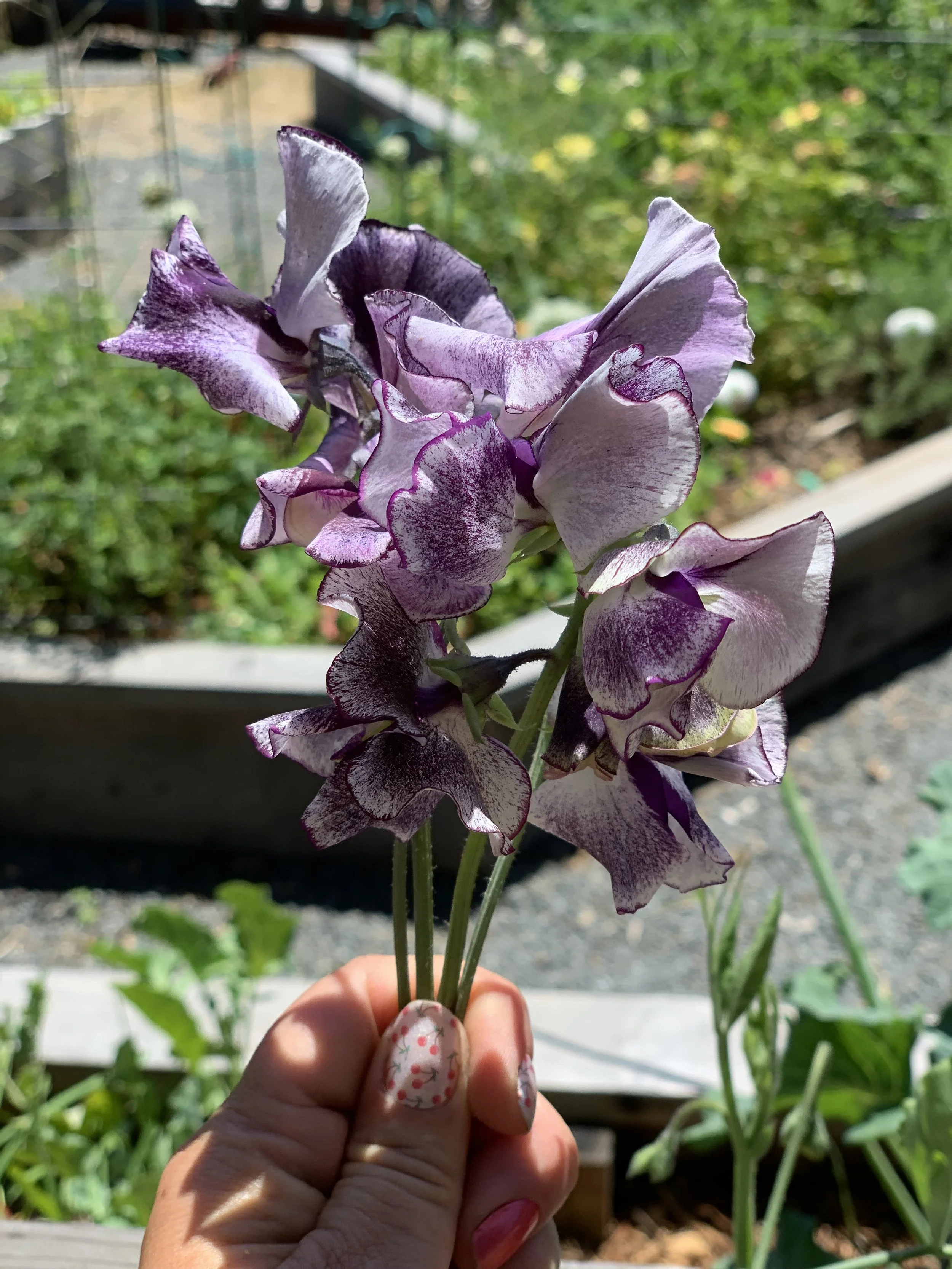Glenys Johnson’s Sweet Pea Farm
If you've been following along for a while, you know I love tucking flowers into my vegetable garden. After months of rain, nothing excites me more than that first pop of color in early spring. Flowers not only bring vibrancy, but they also attract pollinators that help our fruits and veggies thrive. Best of all, the more you cut, the more they bloom, providing plenty of bouquets to brighten your living space.
Since I'm talking about planting in my veggie garden, I like to choose flowers that are both easy to grow and reseed themselves. That way, they return year after year with minimal effort. Some of my go-to choices are bachelor's buttons, nigella (also known as love-in-a-mist), calendula, nasturtium, and poppies. But one of my personal favorites (maybe because it's my birth flower) is the sweet pea. With their lovely fragrance and long-lasting blooms, they instantly elevate any arrangement.
While many gardeners wait until spring to sow seeds, those who plant in fall are rewarded with more vigorous vines, earlier blooms, and an abundance of flowers. Sweet peas require approximately six weeks of cool weather to establish a robust root system. By the time spring arrives, they're ready to surge upward, climbing six to nine feet and producing armfuls of fragrant blossoms.
One reason fall planting works so well is that sweet peas mimic nature. Seeds that drop at the end of the season don't sprout right away. Instead, they rest quietly in the soil, wait for the cool weather, and then return the following spring bigger, fuller, and farther along than anything planted later.
This month, I'd like to spotlight an excellent local source for sweet peas: Enchanting Sweet Peas. Owner Glenys Johnson has been devoted to these flowers for 28 years and specializes in English Spencer sweet peas, whose extra-large, frilly blossoms have a perfume that can stop you in your tracks.
Nimbus Sweet Pea
Her company offers more than 25 varieties, harvested and packaged right here in West Sonoma County. If you've been planting the same colors year after year, you'll be amazed at the range available. Among them are Glow, a tangerine-rose and cherry bicolor; Millennium, a rich ruby red; Jilly, with soft cream blossoms; and Blue Shift, which magically changes color after cutting—from violet to mauve to sky blue. My personal favorite, though, is Nimbus—inky dark violet with black streaks on silver-gray petals. They make a stunning stand-alone bouquet.
Planting is easy. Select a sunny spot with rich, composted soil, provide sturdy support, and water regularly. Sweet peas are frost-tolerant, so you don't need to worry about cold nights. Seeds sown in fall will sprout when the time is right, and by spring, they'll be well ahead of anything planted later, or even nursery starts.
Sweet Peas (by Glenys Johnson)
I like to sow sweet peas along the outside of my vegetable garden fence. The vines add a colorful, fragrant border, the blooms are easy to snip for bouquets, and the flowers draw in bumblebees that help pollinate the garden. And here's the key to keeping them productive: cut often. The more blooms you harvest, and the more you prevent seedpods from forming, the longer the plants will flower.
Freshly harvested seeds are available this fall at enchantingsweetpeas.com, where Glenys also shares growing supplies and advice. Supporting her business means not only filling your garden with beauty and fragrance but also celebrating a local grower who has kept the tradition alive in our community for nearly three decades.
Happy Gardening!


